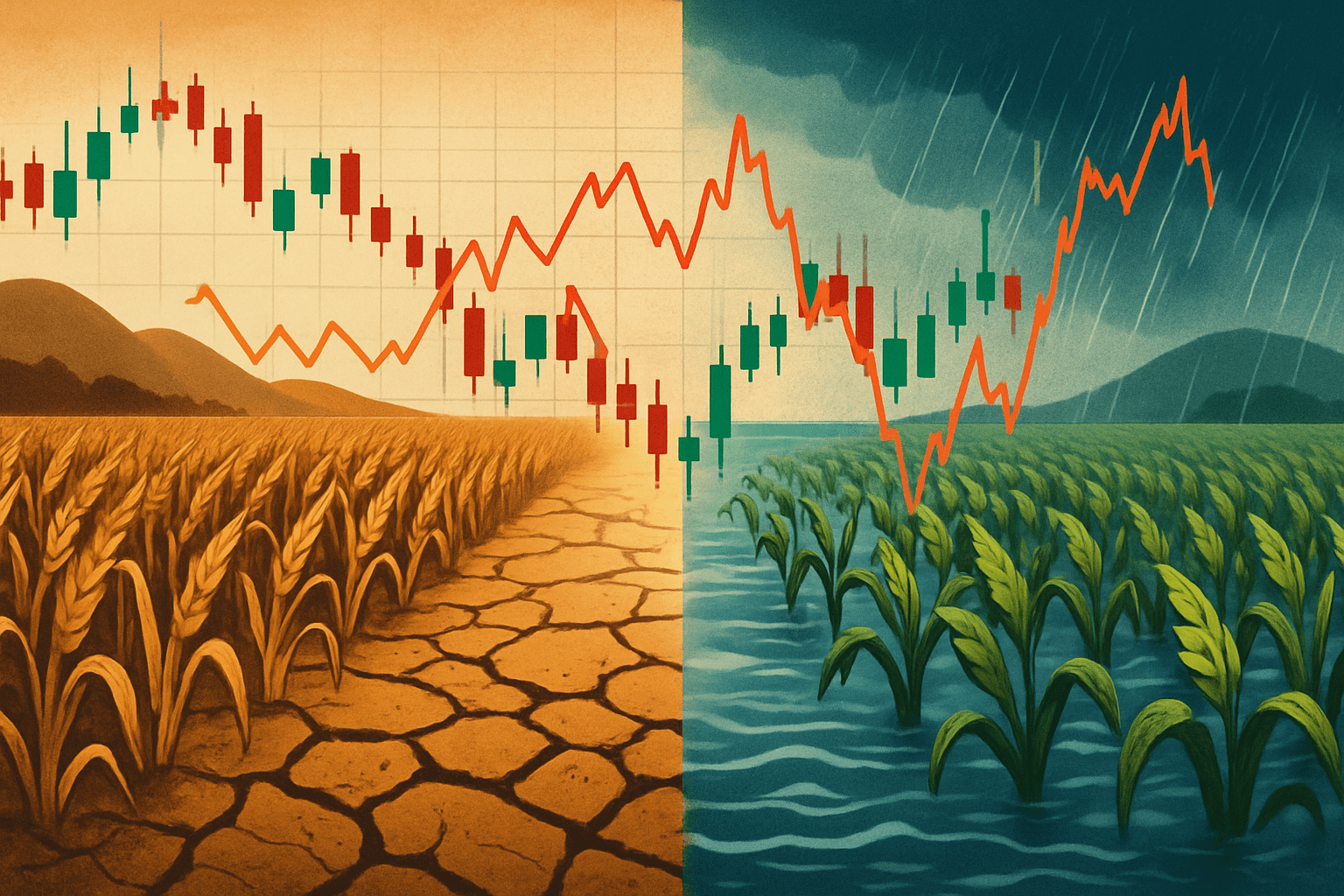
Updated: May 16 – 2025
CHICAGO, USA – Prices for key agricultural commodities, including corn, wheat, and soybeans, have experienced significant volatility in recent months, largely attributed to extreme weather events in major producing regions. Analysts warn that the increasing frequency and intensity of droughts, floods, and heatwaves, linked to climate change, pose a substantial threat to global food security and are likely to keep markets on edge.
Farmers are grappling with unpredictable growing conditions, leading to concerns about crop yields and quality. For instance, prolonged droughts in parts of North and South America have severely impacted corn and soybean harvests, while unseasonal flooding in parts of Europe and Asia has damaged wheat crops. These weather-induced supply shocks are occurring at a time when global demand for food remains strong, further exacerbating price pressures. The impact is not limited to raw commodity prices; it also affects the cost of animal feed, which in turn influences meat and dairy prices, contributing to broader food inflation.
Governments and international organizations are exploring various measures to mitigate these risks, including investing in climate-resilient agricultural practices, developing drought-tolerant crop varieties, and improving water management systems. Additionally, there is a growing focus on enhancing global food supply chain resilience and reducing post-harvest losses. However, these are long-term solutions, and in the immediate future, markets are expected to remain highly sensitive to weather forecasts and climate-related news.
The futures markets for agricultural commodities are reflecting this heightened uncertainty, with increased trading volumes and wider price swings. This situation underscores the urgent need for concerted global action to address climate change and adapt agricultural systems to its unavoidable consequences, ensuring a stable and affordable food supply for a growing world population. The development of more sophisticated weather modeling and early warning systems is also becoming crucial for farmers and traders to make informed decisions in this volatile environment.
Furthermore, discussions around international food aid and strategic reserves are gaining prominence as a way to buffer the most vulnerable populations from price shocks and food shortages resulting from these climate-driven disruptions in agricultural output across different continents.